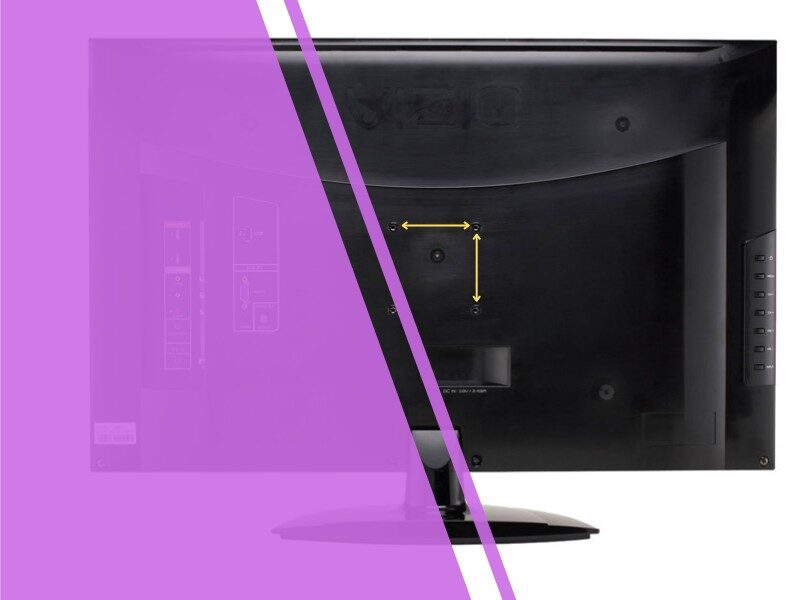
Television sets, which we currently buy for apartments and houses, usually have a flat screen. Although we want our visiting friends to be amazed by the largest diagonal of our TV, at the same time we need to save space. New TVs can be easily hung on a wall or from a ceiling – all we need is a suitable mount. The certainty that the chosen mount will fit the TV is given by the VESA standard.
What is the VESA standard?
The abbreviation VESA comes from the name of the international organization Video Electronics Standards Association that Was established in July 1989. The institution enjoys wide recognition in the audiovisual industry. It has been standardizing the features of video equipment for years, and the VESA standard created in 1997 is used worldwide. VESA is the spacing of mounting holes at the back of a screen, always expressed in millimeters. We define it as the distance of the holes – the first number is the horizontal spacing and the second is the vertical spacing. Usually, the first number is larger, measured across the width of the screen.
The most common VESA dimensions
To facilitate standardization, the standard defines only a few specific spacings:
- VESA 75×75
- VESA 100×100
- VESA 200×200
- VESA 200×100
- VESA 300×300
- VESA 400×400
- VESA 600×400
The smaller dimensions usually apply to computer monitors and the larger dimensions apply to flat panel TVs. TV mount manufacturers often use beams that have universal spacing or additional extension arms.
VESA not only for the wall
VESA spacing can also be important when we want to place our TV on a shelf or cabinet. TV stands often need to be mounted with screws to the back of the panel so that the TV stands steadily. Always pay attention to whether the specification says what the maximum weight of the TV is. If you exceed the limit, the stand may not hold, and if the TV is damaged by an ill-fitting stand, you will lose your warranty. If the surface to which we want to fix the TV is untypical, such as a plaster partition wall, it is also worth considering whether the use of the mount is appropriate
How to choose a mount for VESA spacing
First of all, the TV hanged on the wall should be protected. Its height and background should be adjusted to our preferences. If you like it when the TV is tilted, you can choose a mount that makes it possible. An additional VESA adapter will help you adjust your mount to your new TV but remember not to exceed the maximum load. When choosing screws for a TV, let’s follow the manufacturer’s guidelines because a screw that is too loose may slip out of the holes and a screw that is too long will damage the inside or may break the monitor screen from the inside. VESA applies not only to hanging a TV, we may as well buy a lift covered by the standard and hide it in the furniture. We write more on this subject in the article Which mount to choose for the TV?
What is the VESA standard



Recent Comments